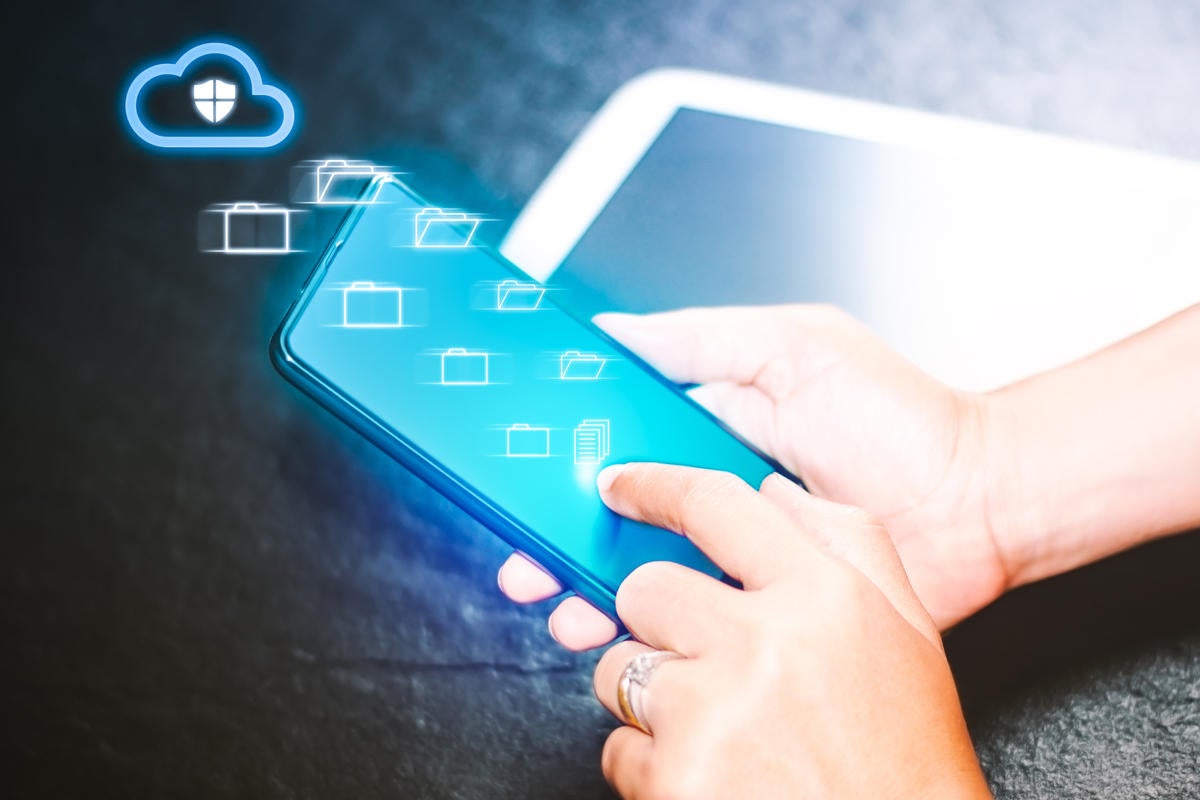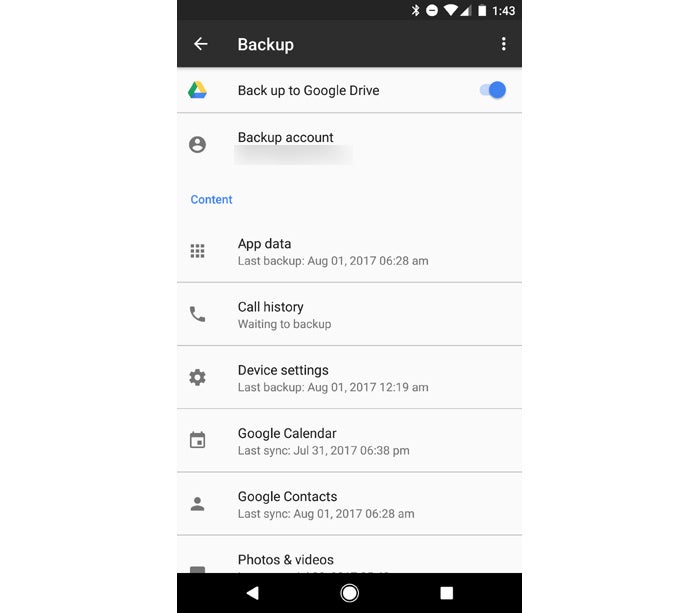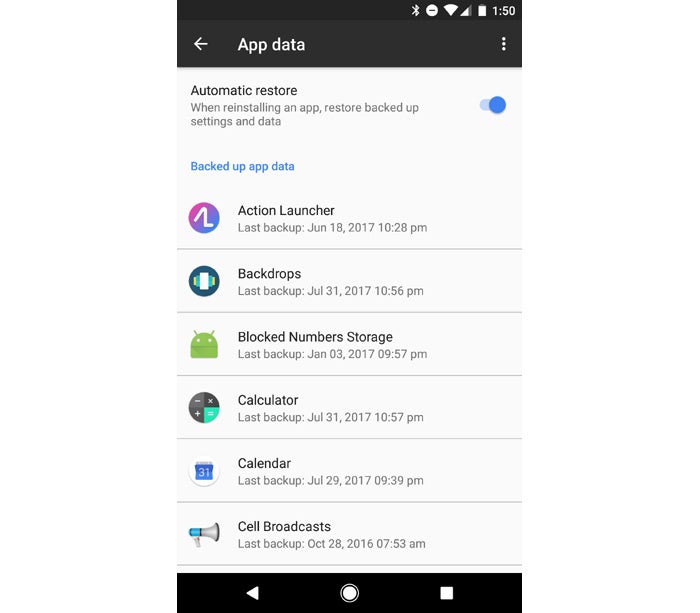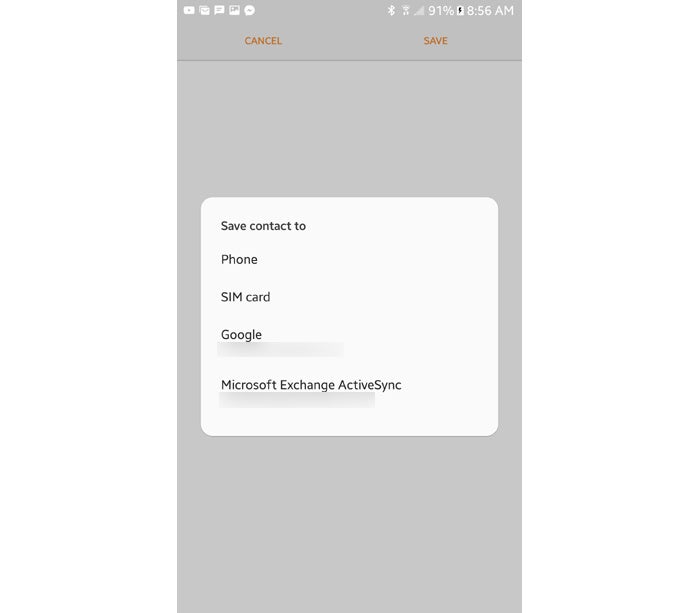How to back up Android devices: The complete guide
How to back up Android devices: The complete guide
Make sure all your important data is always synced and protected with this easy-to-follow Android backup guide.

'Twas a time not so long ago when backing up an Android phone was a massive, migraine-inducing undertaking.
It's true: A mere matter of years back in our mobile device saga, a proper Android backup required physical computer connections, complicated third-party software and more than a few adult beverages.
But my, what a difference a few years makes. These days, backing up an Android device and keeping your data synced takes little to no actual effort. Most of the work happens seamlessly and automatically, behind the scenes — either without any involvement on your behalf or with a one-time opt-in when you first set your phone up. And restoring your data is typically as simple as signing into a device and letting Google's systems work their magic.
Still, your data is important, especially if you use your phone for business. With all the stuff we tend to have on our phones (or at least accessible from our phones), it's worthwhile to know where and how everything's being saved. That way, you can understand what's happening and confirm it's all functioning as intended — and the next time you need to move to a new device, you can rest easy knowing your data will be there and ready.
Here's a section-by-section breakdown of Android's backup systems and how they operate.
On the system level, that includes many of your Android settings and preferences, ranging from approved Wi-Fi networks and passwords to your language and input settings, date and time settings and display preferences.
It's true: A mere matter of years back in our mobile device saga, a proper Android backup required physical computer connections, complicated third-party software and more than a few adult beverages.
But my, what a difference a few years makes. These days, backing up an Android device and keeping your data synced takes little to no actual effort. Most of the work happens seamlessly and automatically, behind the scenes — either without any involvement on your behalf or with a one-time opt-in when you first set your phone up. And restoring your data is typically as simple as signing into a device and letting Google's systems work their magic.
Still, your data is important, especially if you use your phone for business. With all the stuff we tend to have on our phones (or at least accessible from our phones), it's worthwhile to know where and how everything's being saved. That way, you can understand what's happening and confirm it's all functioning as intended — and the next time you need to move to a new device, you can rest easy knowing your data will be there and ready.
Here's a section-by-section breakdown of Android's backup systems and how they operate.
General settings and preferences
When you powered up your Android device for the first time, you probably signed in with your primary Google account. This is critical — because that same account is your key to the vast majority of your automatically backed up data.On the system level, that includes many of your Android settings and preferences, ranging from approved Wi-Fi networks and passwords to your language and input settings, date and time settings and display preferences.

You can also look in the "Backups" section of Google Drive on the web to find this same information and see precisely how much space is being taken up by your backed up settings for any devices associated with your account.
Apps and app data
The list of apps you've installed from the Play Store is always synced with Google's servers, and when you first sign into any new Android device, you'll be given the opportunity to restore that complete set of applications or to cherry-pick certain titles from within the list. If you've had more than one Android device active on your account recently, you'll be able to choose which device you want to use as the source.For devices running 2015's Android 6.0 Marshmallow release and higher, Google provides an expanded app backup system that also saves and restores app-specific data — everything from sign-ins to preferences and any other relevant elements. It's worth noting that this requires some level of integration and support on the developers' behalves, however, so it works more effectively with some apps than others.
You can see which apps are backing up data and when the backups were last performed by heading into that same "Backup & reset" section of your system settings and tapping the "App data" line. There, you'll also see a toggle that instructs Android to automatically restore any backed up settings and data from an app whenever it's reinstalled.

Calendar, contacts and email
Backing up these business-critical areas is actually quite easy — because nowadays, almost all calendar, contact and email data is inherently cloud-based (or at the very least cloud-connected). In other words, you don't have to back up your phone's email or calendar data because it's already stored in the cloud; you can simply open the email or calendar app from another device to retrieve it.(Google's own email and calendar apps — Gmail and Google Calendar, respectively, both of which come preinstalled on many phones and are readily available for anyone to download — store data with Google's servers by default but can also work with Exchange and other third-party accounts. You can add third-party accounts directly into the Gmail app; with Exchange, once your account is added into Gmail, it should then show up in Google Calendar as well.)
The one asterisk worth mentioning is contacts, as some manufacturers and even carriers provide their own interfaces for organizing contact information — and those interfaces don't always sync with Google's Contacts system by default. Suffice it to say, this isn't ideal: If your data is set to sync with, say, Verizon's system instead of Google's, you'll be in a pickle if you ever try to sign into a non-Verizon phone in the future. Similarly, if your contact data is being stored only on the device's local storage or SIM card by default, you're asking for trouble down the line.
Go into your phone's Contacts app and look in its settings to see if there's any option for where your contacts are being synced or stored. The specifics vary from one device to the next, depending on the manufacturer and carrier — but often, when a company puts its own solution in place of Google's, it'll give you the ability to switch to Google's Contacts system if you want.
Some phones' Contacts apps may also ask where you want to store a contact every time you add someone new. Be sure to always select Google for maximum consistency and accessibility moving forward.

Messaging
If you lose your Android phone or decide to move to another, there's a decent chance your existing text messages will vanish into the digital ether. That might be fine (and hey, who knows, maybe even a positive thing), but if you do want to back up and save your SMS data, it's pretty painless to do.The simplest way is to use a messaging app that automatically takes advantage of Google's data syncing system and does all the heavy lifting for you. Google's own free Android Messages app is a nicely designed and intuitive option with that functionality built in (and it's actually the standard default messaging app for Android, though many manufacturers and carriers opt to provide their own alternatives instead of or in addition to it).
Download it, install it and follow the steps to set it as the default messaging app on your device — and that's it: When you install and open up the same app on any future devices, all of your conversations will be right there waiting for you.
If you want something a bit more robust, the third-party Pulse SMS app is an excellent next-level option. Along with built-in cloud backup and sync, it provides plenty of opportunities for customization and also lets you send, receive and manage messages in real time from multiple devices — including desktop computers. (The basic phone app is free to use, though the multi-device messaging capability requires a paid in-app upgrade of $10.99 for a lifetime subscription or $0.99/mo. for a shorter-term trial.)
There are also third-party utilities like Carbonite's free SMS Backup & Restore that can manually back up and restore SMS data, but using a messaging app that handles that task continuously and seamlessly is the simpler and more effective way to go.
Files
The easiest way to keep files on your device backed up is to save them directly to a cloud-based storage service like Dropbox, Google Drive or Microsoft OneDrive. All of those services provide a reasonable amount of free storage — with additional space available for a nominal monthly or annual fee — and all of them make it simple to access files from your device whether you're online or not.If you'd rather store files locally on your Android phone, snag a $3 app called FolderSync Pro. It'll let you continuously sync folders on your phone with matching folders on a cloud storage service of your choice — and once you set it up, you'll never have to think about it again. FolderSync Pro supports practically every storage service imaginable and can even work with your own personal or corporate server space.

Photos and music
OK, so they aren't technically work-related — but even if you use a business-connected phone, odds are you're taking some pictures and listening to the occasional hackle-soothing jam.Thankfully, keeping your photos and music backed up is a fairly thought-free process at this point. On the photos front, Google's free Google Photos app will automatically sync every image and video you take and make it available on any other device — mobile or otherwise.
And for music, the free Google Music app lets you upload your entire personal MP3 collection — up to 50,000 songs, if you still own that much music — and then access it from any Android device or from any computer via a web browser.
If streaming's your thing, of course, just download the appropriate app for whatever service you prefer and listen away without worry.
Courtesy = https://goo.gl/XLevkC
Good information...
ReplyDeleteThis information is vary use full to android user...
Thanc
Great, very good knowledgeable information Mr.Desai.
ReplyDeletePretty useful. Nice ond sir.
ReplyDeleteHi This is Sanju Baba i'm suggesting you this is app JibJab Mod Apk
ReplyDelete